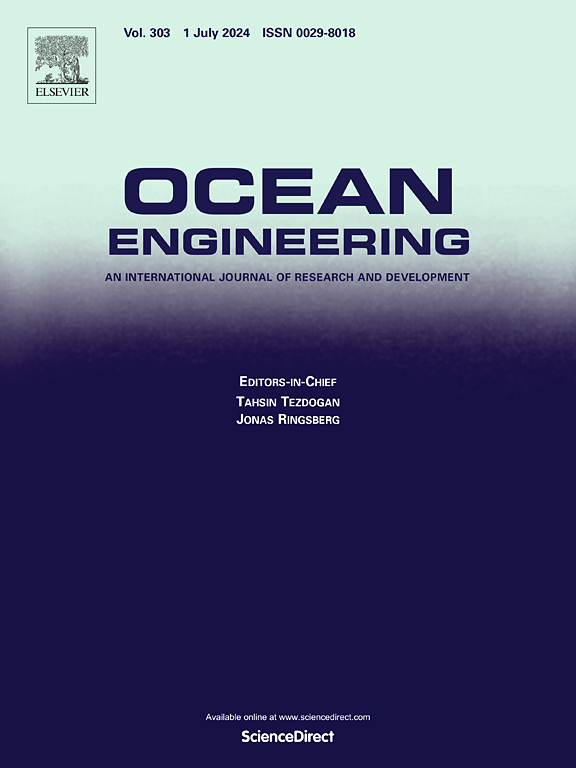Numerical study on wave–wind coupling effects on hydrodynamics and light capture performance of offshore multi-body floating photovoltaic system
IF 5.5
2区 工程技术
Q1 ENGINEERING, CIVIL
引用次数: 0
Abstract
Offshore floating photovoltaic (FPV) systems have the potential to become important clean energy sources. However, the behavior of multi-body FPV under coupled wave–wind conditions are not fully understood. In this study, the hydrodynamics and light capture performance of FPV systems in coupled wave–wind co-directional conditions were numerically assessed by considering three different panel arrangements. This study utilized potential flow theory to conduct wave simulations and used Morison force to calculate the wind effect on the structure. The wind coefficient variation with pitch is innovatively considered in the present numerical method. The hydrodynamic results were compared with wave-only conditions to understand the effects of wind–wave coupling better. It was observed that wind has a significant effect on the surge motions of FPV systems in low-frequency waves. Compared with a pure wave condition, the average position in the vertical direction of the structure in a parallel arrangement sinks by about 12.4% owing to the vertical component of the wind load on the photovoltaic panel, while exhibiting a float rise in staggered and symmetrical arrangements. The coupling of wave–wind loads cause a sharp increase in both the mooring force and the horizontal connection forces at low frequencies. The insolation in the parallel arrangement was 13% greater than that in the staggered and symmetrical arrangements under the same conditions.
波浪-风耦合对海上多体漂浮光伏系统水动力和光捕获性能影响的数值研究
海上浮动光伏(FPV)系统有潜力成为重要的清洁能源。然而,对多体FPV在波风耦合条件下的特性还没有完全了解。在本研究中,通过考虑三种不同的面板布置,对FPV系统在波风共向耦合条件下的流体力学和光捕获性能进行了数值评估。本研究利用势流理论进行波浪模拟,利用莫里森力计算风对结构的影响。该数值方法创新性地考虑了风系数随俯仰的变化。为了更好地了解风浪耦合的影响,将水动力结果与仅波浪条件进行了比较。研究发现,风对FPV系统在低频波中的浪涌运动有显著影响。与纯波浪条件相比,平行布置时,由于光伏板上风荷载的垂直分量,结构在垂直方向上的平均位置下沉了约12.4%,而交错布置和对称布置时则呈现浮子上升。波浪-风荷载的耦合作用使低频系泊力和水平连接力都急剧增大。在相同条件下,平行排列的日晒比交错排列和对称排列的日晒多13%。
本文章由计算机程序翻译,如有差异,请以英文原文为准。
求助全文
约1分钟内获得全文
求助全文
来源期刊

Ocean Engineering
工程技术-工程:大洋
CiteScore
7.30
自引率
34.00%
发文量
2379
审稿时长
8.1 months
期刊介绍:
Ocean Engineering provides a medium for the publication of original research and development work in the field of ocean engineering. Ocean Engineering seeks papers in the following topics.
 求助内容:
求助内容: 应助结果提醒方式:
应助结果提醒方式:


